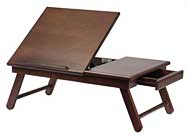Lap Desk - Floral
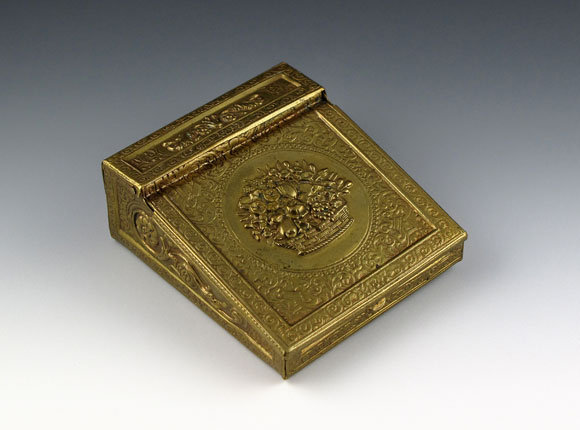
Needle Case
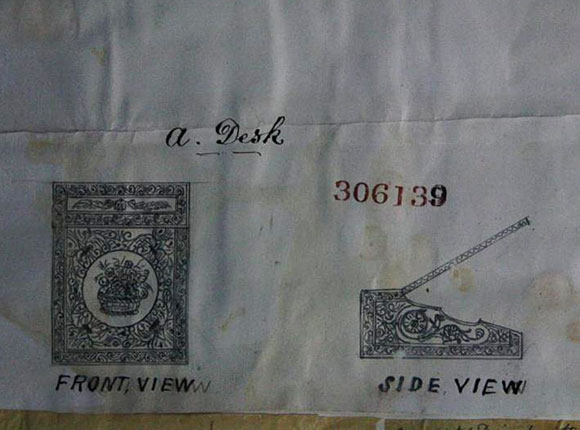
Design Representation
Note: This needle case has been found with two different diamond registration marks, one that matches the design registration listed
below and one that translates to March 29, 1876. After a review of all metal designs registered with TNA on March 29, 1876, it was discovered
that there were fourteen designs registered on that date, each one contained a subject and only one was listed with a subject equal to "needle or
pin case". This item was registered to Coggins & Baxter (#299476 - Park Chair needle case). It appears as though Coggins &
Baxter accidently used the diamond mark for the Park Chair on several of their Lap Desk - Floral needle cases. Coggins & Baxter made a
similar mistake on their Looking Glass needle case.
Design Details
Needle Case Type: |
Figural |
Patent/Registered to: |
Coggins & Baxter - Birmingham |
Patent/Design Representation #: |
Ornamental Class1: Metal: #306139 |
Patent/Design Registration Date: |
December 19, 1876
|
Location of Patent/Design Registration: |
The National Archives (TNA) - Kew, UK |
Reference #: |
TNA Representation - BT 43/41/306139
TNA Register - BT 44/3/306139 |
Dimensions: |
5.5 x 4.9 x 2.1 |
Material: |
Brass |
Name Variations: |
W. Avery & Son - Redditch |
Other Variations: |
None |
Additional Photographs
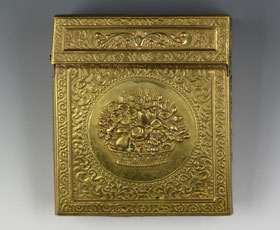
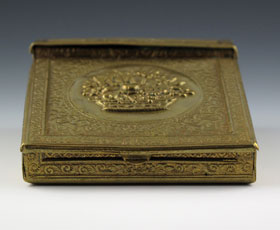
Top and front views
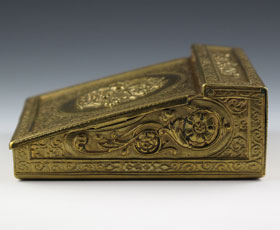
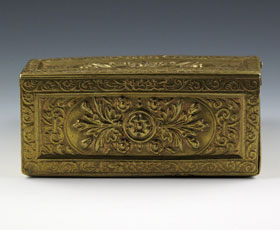
Side and back views
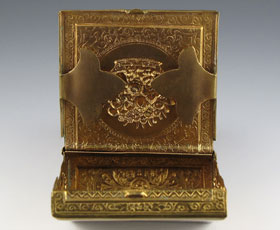
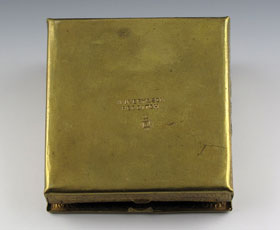
Interior and bottom views
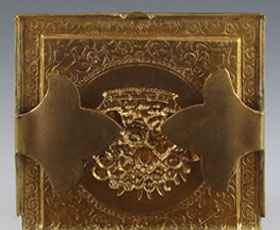
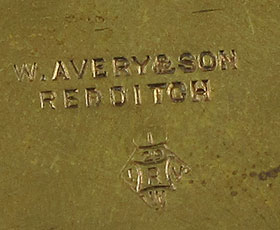
Interior detail and bottom signature detail with March 29, 1876 date (29, V, W)
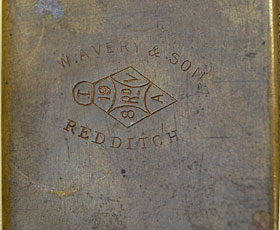
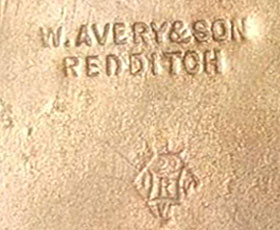
Back signature details on two other Lap Desk Floral needle cases, one is dated to December 19, 1876 (19, V, A) and the other is dated
March 29, 1876 (29, V, W)
Facts
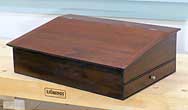
A lap desk is a portable desk-like surface placed on a person’s lap to make it easier to write and review information when a regular desk is not
available. Early lap desks contained a storage area to carry papers, ink, quills and other supplies needed for writing. Most were made
of heavy wood and had sloping lids to provide the writer with a convenient surface upon which to write. They were used most often by travelers
who needed a convenient way to write or conduct business while being transported from one place to other. In many ways these early lap desks
were like the modern brief case.
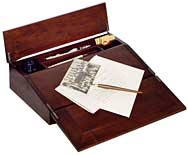
History
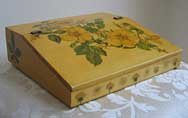
Although portable boxes for writing supplies have been around for centuries, it wasn’t until the late 18th century that the Napoleonic wars and
the popularity of traveling lead to an increase in writing. Officers in the army needed a writing box in order to handle army business as well
as to write home and well-to-do young men who embarked on the “Grand Tour” of Europe, a rite of passage, needed someplace to jot down notes to
document their adventures and what they learned. During the Victorian period public education became more common and an educated middle class
learned to write as well. The introduction of the penny postage stamp and less expensive train travel provided the middle class with more
opportunities to write letters, notes and post cards necessitating a sloping surface lap desk like the ones here.
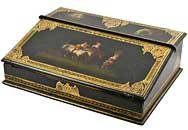
Miscellaneous
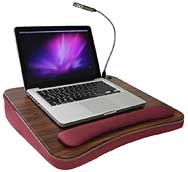
Today some believe the lap desk has been replaced by the laptop computer where information is much better organized. However, upon
closer examination, many people still need a semi-hard surface to set their computers on as well as something to place between their laps and the
warm bottoms of some PCs. Modern lightweight lap desks, often with cushioned bottoms or legs to allow ventilation, were created to solve this
problem.
